Charge renormalization
The physical electron charge can be defined in the following way:
Let us
consider two classical  charged particles
being at the rest at a large distance from each other
charged particles
being at the rest at a large distance from each other  :
:

The interaction of the charges is described by the Coulomb low
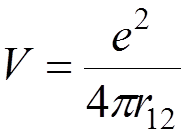 ,
,
where ![]() is the physical charge.
is the physical charge.
From
the other side, the calculation within QED shows that, to the two lowest orders
in ![]() , the interaction is described by the
diagrams
, the interaction is described by the
diagrams
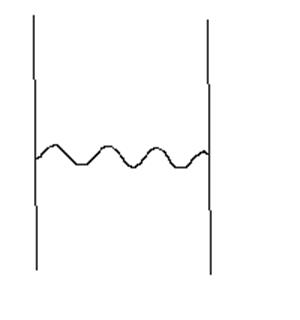

Their calculation yields
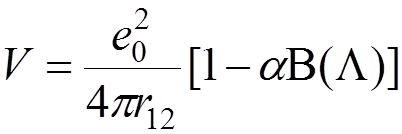 ,
,
where ![]() is the regularization parameter for the
one-photon-loop diagram. Comparing both formulas, we obtain
is the regularization parameter for the
one-photon-loop diagram. Comparing both formulas, we obtain
 .
.
It yields
![]()
 ,
,
where
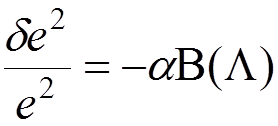 .
.
Therefore, in our equations we should put
![]()

that is known as the charge renormalization.
In particular, the charge renormalization makes the vacuum polarization (VP) contribution to the energy shift of an atomic level to be finite:
Interaction with
 the
Coulomb field
the
Coulomb field
of the nucleus
 |
For low-Z H-like atoms, the VP energy shift is

For the 2s state in hydrogen:
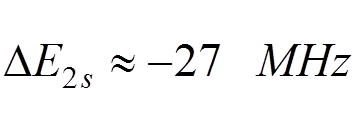 .
.
References
[1] J.J. Sakurai, Advanced Quantum Mechanics, 1967.
[2] V.G. Serbo and I.B. Khriplovich, Lectures on Quantum Mechanics, (Novosibirsk State University, 1999).
[3] J.D. Bjorken and S.D. Drell, Relativistic Quantum Mechanics, 1964.
[4] V.B. Berestetskii, E.M. Lifshitz, and L.P. Pitaevskii,
Relativistic Quantum Theory, 1971.
[5] W. Greiner, Quantum Mechanics. Special Chapters,
1998.
[6] W. Greiner and J. Reinhardt, Quantum Electrodynamics, 1992.
Appendix I
We
consider a![]() space of functions
space of functions

with the boundary conditions

In this space, the momentum operator
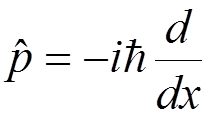
is Hermitian and has eigenfunctions

where  . The corresponding eigenvalues are
. The corresponding eigenvalues are  . For any
. For any  from
the space under consideration we have
from
the space under consideration we have

If  is real, we obtain
is real, we obtain

This expansion corresponds to the Fourier expansion in terms of the “cos” and “sin” functions:

where


For
an even function,  and, for an odd function,
and, for an odd function,  .
. ![]()
The
boundary condition  does not mean that
does not mean that  is an even function.
is an even function.
Appendix II
Let us summarize the mass renormalization procedure
in the non-relativistic case. We start with the Schroedinger equation:

where
 is the momentum operator and
is the momentum operator and  is the bare electron mass. Calculating the
energy shift of the level “a” due to interaction with the quantized electromagnetic
field, we get
is the bare electron mass. Calculating the
energy shift of the level “a” due to interaction with the quantized electromagnetic
field, we get

where
 . From the other side, the interaction
. From the other side, the interaction
with the quantized electromagnetic field shifts the electron mass by

where
![]() is the observable electron mass. Because
we know from experiment only
is the observable electron mass. Because
we know from experiment only ![]() , we must express all
physical quantities in terms of
, we must express all
physical quantities in terms of ![]() but not
but not  . With this in mind we should put in the
Schroedinger equation
. With this in mind we should put in the
Schroedinger equation

and
consider the second term (which is ![]() ) by perturbation
theory.
) by perturbation
theory.
The observable energy shift is

 .
.
Where
in  we also can use
we also can use ![]() instead of
instead of  ,
because this replacement does not affect the energy shift
,
because this replacement does not affect the energy shift
in
order ![]() .
.
Уважаемый посетитель!
Чтобы распечатать файл, скачайте его (в формате Word).
Ссылка на скачивание - внизу страницы.